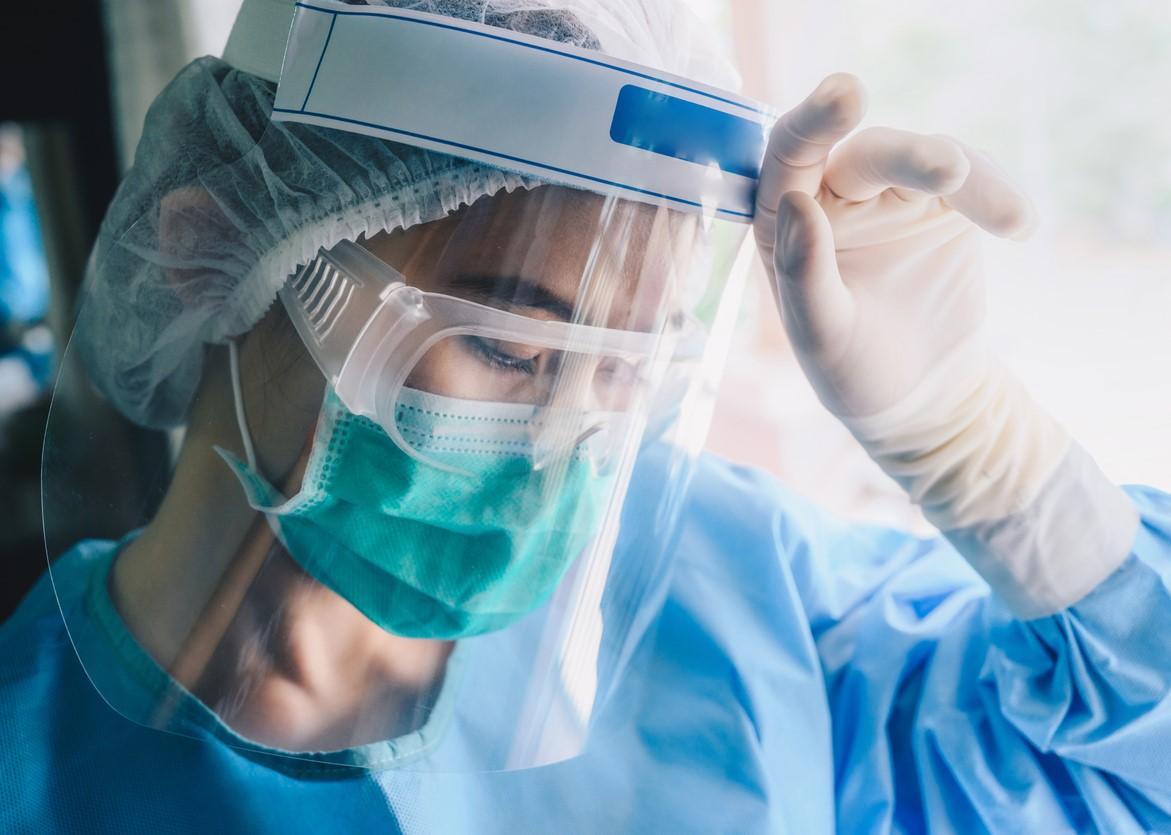The number of Americans hospitalized for COVID-19 is hitting new highs as coronavirus infections continue to spike across the country.
The COVID Tracking Project reports that 61,964 Americans were hospitalized with COVID-19 as of Nov 10. That's the most hospitalizations recorded since the beginning of the pandemic in March. And with hospitalizations lagging a few weeks behind new cases, that number will continue to climb.
As the COVID Exit Strategy website shows, 47 states are now seeing uncontrolled spread of the coronavirus, and two are trending poorly. The rising number of cases across the country led governors in several states yesterday to impose new restrictions to try to curb the spread of the virus. Among them is Minnesota, which ordered bars and restaurants to end in-person service between 10pm and 4am and limited indoor and outdoor gathering to 10 people.
In an online address, Gov. Tim Walz also urged the public to wear masks, practice physical distancing, wash their hands, and stay home if they don't feel well.
"This is not inevitable that we end up in a crisis," Walz said. "But if we don't do these things we certainly will be there."
The US added 136,325 new COVID-19 cases yesterday, along with 1,415 deaths, according to the Johns Hopkins COVID-19 dashboard. The total since the beginning of the pandemic stands at 10,353,604 confirmed cases and 240,688 deaths.
Impact on hospitals in the West, Midwest
At a media briefing today held by the Infectious Diseases Society of America, Andrew Pavia, MD, FIDSA, chief of the pediatric infectious disease division at the University of Utah School of Medicine, explained how the surge in infections and hospitalizations is affecting hospitals in the Upper Midwest and Western states, which were not as hard-hit during the earlier waves in the spring and summer.
"The impact is just enormous," Pavia said. "These are states in which medical resources tend to be concentrated in a few large cities."
Pavia said in states like Utah, where the care is so spread out, public health resources right now are overwhelmed, and hospitals are "extraordinarily stressed." And it's not just about bed capacity.
"One of the things that many of the western states have in common is a relative shortage of the people that we need to take care of very sick people," he said. "Throughout the region, people are facing a crisis in staffing…the situation really has to be described as dire."
Pavia explained that under normal circumstances, hospitals might have one dedicated nurse per patient in an intensive care unit (ICU). But at many hospitals in the region at the moment, the ratio is one nurse to four or five ICU patients. And many of the overflow ICUs that hospitals have created are being staffed by clinicians who haven't worked in an ICU in a while.
"To help somebody survive an illness like this requires a great deal of care from very skilled people," he said. "And as we have to spread those resources thin, the care isn't as good."
Utah, which instituted a statewide mask mandate and temporarily halted all school extracurricular activities earlier this week, reported 2,517 new coronavirus infections yesterday, continuing a streak of days of more than 2,500 new cases, according to the Salt Lake Tribune. There are currently 435 patients being hospitalized for COVID-19 in the state, and that number has been rising steadily since October.
Soaring hospitalizations in Iowa, meanwhile, prompted Gov. Kim Reynolds to order a mask mandate for large public gatherings and to limit certain types of public gatherings yesterday. Reynolds has implemented very few coronavirus restrictions to date, but with the state reporting more than 4,000 new cases a day for several days and hospitalizations increasing by 84% over the past month, the governor relented.
But University of Iowa infectious disease specialist Eli Perencevich, MD, MS, told the Des Moines Register that Reynolds's order isn't enough. "Anything less than a statewide mask mandate if you are out of your home with fines, closing bars and indoor restaurants, cancelling all after-school activities, closing schools, and banning gatherings outside your family will not be effective in bending the curve and saving our hospitals," he said. "It is lipstick on a pig."
New CDC position on masks
In other US developments:
- The Centers for Disease Control and Prevention (CDC) yesterday posted a new document stating that cloth face masks offer protection from SARS-CoV-2, the virus that causes COVID-19, for both the person wearing them and those around them. The CDC's previous position had been that masks mainly serve as "source control" by reducing the amount of virus particles exhaled by the wearer. "Experimental and epidemiological data support community masking to reduce the spread of SARS-CoV-2," the CDC said. "The prevention benefit of masking is derived from the combination of source control and personal protection for the mask wearer."
- Biotechnology company Moderna announced today that it has accrued enough COVID-19 cases for a planned interim analysis of its COVID-19 vaccine candidate. The company said that with the significant increase in case identification across its phase 3 trial sites in the last week, it expects the first interim analysis will include more than 53 cases. The phase 3 trial of the mRNA vaccine includes 30,000 participants.
- New York Gov. Andrew Cuomo announced today that, starting Nov 13, private indoor and outdoor gatherings will be limited to 10 people, and gyms, bars, and restaurants will have to close at 10pm, the New York Times reports. The move was made to help prevent a second wave in the state, which was the US epicenter of the pandemic in the spring but has had one the lowest infection rates in the country since then. New York's 7-day average positivity rate hit 2.43 today, the highest it's been since June.




















